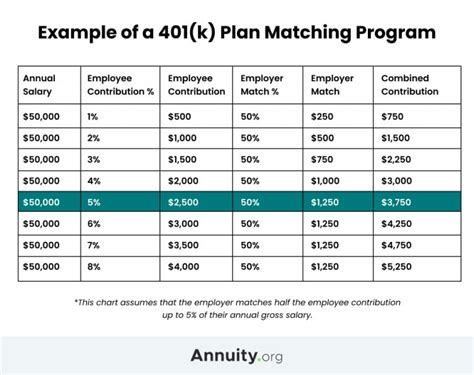
Delaying Social Security to maximize future benefits while drawing down 401(k) funds early is a retirement strategy gaining traction, but financial advisors caution it’s not without risk, especially given market volatility, inflation, and potential healthcare costs.
Many Americans are grappling with how to optimize their retirement income streams, and the decision of when to claim Social Security is a critical component. While claiming Social Security benefits before the full retirement age (FRA) – which is typically 66 or 67 – reduces the monthly payout, delaying it past FRA can significantly increase benefits, up to age 70. The appeal of a larger, guaranteed Social Security check later in life is tempting, but the strategy hinges on having sufficient funds to bridge the income gap in the interim, often by tapping into 401(k) or other retirement accounts.
The strategy involves using 401(k) assets to cover living expenses from the point of retirement until age 70, allowing Social Security benefits to grow. For each year benefits are delayed beyond full retirement age, the benefit increases by 8%, up to age 70. This can result in a substantial boost in monthly income, potentially providing a more secure financial future in later years.
However, financial experts emphasize the inherent risks. One primary concern is market volatility. Drawing down 401(k) assets during a market downturn can deplete savings faster than anticipated, particularly if withdrawals are substantial. This is known as sequence of returns risk – experiencing negative returns early in retirement can significantly diminish the longevity of retirement funds.
“You are really playing with fire,” says Rob Greenman, a certified financial planner with Vista Capital Partners. “If the market has a bad sequence of returns in the first five years of retirement, that money could be gone.”
Inflation also poses a significant threat. As the cost of living rises, retirees relying on 401(k) withdrawals may find their purchasing power eroded, especially if investment returns don’t keep pace with inflation. Unexpected healthcare expenses represent another major risk. Medical costs tend to increase with age, and a significant health event can quickly deplete retirement savings.
Furthermore, tax implications must be carefully considered. 401(k) withdrawals are generally taxed as ordinary income, potentially pushing retirees into higher tax brackets, especially if they are withdrawing large sums to cover living expenses. This can reduce the overall benefit of delaying Social Security.
Another critical factor is longevity. The strategy of delaying Social Security is most beneficial for those who expect to live a long life. If an individual dies shortly after claiming Social Security at age 70, they may have been better off claiming benefits earlier, even with a reduced payout.
“The longer you live, the better off you’ll be by delaying,” says Wade Pfau, a professor of retirement income at the American College of Financial Services. “If you don’t live very long, you would have been better off taking Social Security earlier.”
For individuals considering this strategy, a comprehensive financial plan is essential. This plan should include a detailed assessment of retirement income needs, projected expenses, investment risk tolerance, and potential healthcare costs. It should also consider the impact of taxes and inflation.
Financial advisors often recommend stress-testing retirement plans under various market scenarios to assess the potential impact of market downturns and other unforeseen events. This can help retirees understand the risks involved and make informed decisions about their retirement income strategy.
Alternatives to relying solely on 401(k) withdrawals to bridge the income gap include part-time work, annuities, and Roth IRA conversions. Part-time employment can provide additional income and help preserve retirement savings. Annuities offer a guaranteed stream of income, providing a hedge against longevity risk. Roth IRA conversions can reduce future tax liabilities, potentially increasing overall retirement income.
Ultimately, the decision of whether to delay Social Security and draw down 401(k) funds early is a personal one that depends on individual circumstances. It requires careful planning, a thorough understanding of the risks involved, and a realistic assessment of one’s financial situation. Seeking advice from a qualified financial advisor is crucial to making informed decisions and developing a retirement income strategy that meets individual needs and goals.
The decision to delay Social Security is not a one-size-fits-all solution. It’s crucial to consider various factors and weigh the potential benefits against the inherent risks. Understanding personal circumstances, including health, financial situation, and risk tolerance, is essential for making the right choice.
Moreover, individuals should also consider the impact of spousal benefits. If one spouse has a significantly higher earning history than the other, delaying Social Security may provide greater benefits for the surviving spouse. The survivor benefit is based on the higher-earning spouse’s benefit, so maximizing that benefit can provide crucial financial security for the surviving spouse.
Furthermore, it’s important to be aware of the potential for changes in Social Security laws. While Social Security is currently projected to be able to pay full benefits for several more years, there is a possibility that benefits could be reduced or the retirement age could be increased in the future. While not a certainty, this possibility should be considered when making long-term retirement plans.
In conclusion, the strategy of delaying Social Security and drawing down 401(k) funds early can be a viable option for some retirees, but it’s not without risk. Careful planning, a thorough understanding of the risks involved, and professional financial advice are essential for making informed decisions and ensuring a secure retirement. The allure of a larger Social Security check later in life must be weighed against the potential downsides of depleting retirement savings too quickly.
Expanded Details and Context:
The growing interest in delaying Social Security and using 401(k) funds highlights a shift in retirement planning. For decades, the traditional approach focused on maximizing Social Security benefits as early as possible. However, with increasing longevity and concerns about the adequacy of retirement savings, more individuals are exploring alternative strategies.
One of the key drivers behind this shift is the decline in traditional pension plans. In the past, many workers could rely on a guaranteed income stream from their employer-sponsored pension. Today, most workers rely on 401(k) plans, which require individuals to take responsibility for their own retirement savings. This has led to a greater emphasis on financial planning and a search for strategies to optimize retirement income.
Another factor is the increasing awareness of the benefits of delaying Social Security. The 8% annual increase in benefits for each year of delay beyond full retirement age can be a significant incentive, particularly for those who expect to live a long life. This can provide a substantial boost in monthly income, potentially offsetting the risk of outliving one’s savings.
However, the decision to delay Social Security also involves a trade-off. Individuals who delay benefits must have sufficient funds to cover their living expenses in the interim. This often means drawing down 401(k) assets or other retirement accounts. The risk is that these assets could be depleted too quickly, particularly if market conditions are unfavorable or if unexpected expenses arise.
To mitigate these risks, financial advisors recommend a comprehensive retirement plan that considers all aspects of an individual’s financial situation. This plan should include a detailed assessment of retirement income needs, projected expenses, investment risk tolerance, and potential healthcare costs. It should also consider the impact of taxes and inflation.
One of the most important aspects of retirement planning is managing investment risk. Retirees who are relying on 401(k) withdrawals need to be particularly careful about their investment allocation. They should avoid taking on too much risk, as a market downturn could significantly deplete their savings. At the same time, they need to ensure that their investments are generating sufficient returns to keep pace with inflation.
Another strategy for managing risk is to diversify retirement income sources. Relying solely on 401(k) withdrawals can be risky, as it exposes retirees to market volatility and sequence of returns risk. Other income sources, such as part-time work, annuities, and Roth IRA conversions, can provide a more stable and predictable income stream.
Part-time work can be a valuable source of income for retirees. It not only provides additional income but also helps to keep retirees active and engaged. Annuities offer a guaranteed stream of income, providing a hedge against longevity risk. Roth IRA conversions can reduce future tax liabilities, potentially increasing overall retirement income.
In addition to financial planning, it’s also important to consider the non-financial aspects of retirement. Retirement is a major life transition, and it’s important to plan for how you will spend your time and stay engaged. Many retirees find that volunteering, pursuing hobbies, or spending time with family and friends can be fulfilling and rewarding.
Ultimately, the decision of how to optimize retirement income is a personal one that depends on individual circumstances. There is no one-size-fits-all solution. It requires careful planning, a thorough understanding of the risks involved, and a realistic assessment of one’s financial situation. Seeking advice from a qualified financial advisor is crucial to making informed decisions and developing a retirement income strategy that meets individual needs and goals.
The debate over delaying Social Security versus claiming early is ongoing. Studies have shown that for many individuals, delaying Social Security is the optimal strategy, particularly for those who expect to live a long life. However, this strategy is not without risk, and it’s important to consider all factors before making a decision.
One of the key factors to consider is your health. If you are in poor health and do not expect to live a long life, it may be better to claim Social Security early. This will allow you to receive benefits for a longer period of time, even if the monthly payout is lower.
Another factor to consider is your financial situation. If you have significant savings and investments, you may be able to afford to delay Social Security and draw down your assets. However, if you have limited savings, you may need to claim Social Security early in order to meet your basic living expenses.
It’s also important to consider the impact of taxes. Social Security benefits are taxable, and the amount of taxes you pay will depend on your income level. If you are in a high tax bracket, you may want to consider delaying Social Security in order to reduce your tax burden.
Finally, it’s important to consider your personal preferences. Some people simply prefer to have the security of a guaranteed income stream from Social Security, even if the monthly payout is lower. Others are more comfortable taking on risk and managing their own investments.
Specific Scenarios and Considerations:
- Early Retirement: Individuals who retire early, perhaps in their early 60s, face a longer period of needing income before Social Security kicks in. This scenario necessitates a robust 401(k) or other savings to cover expenses and potentially increases the sequence of returns risk.
- Spousal Benefits: If one spouse has significantly lower earnings, delaying the higher-earning spouse’s Social Security can maximize survivor benefits, providing crucial income for the surviving spouse later.
- Health Concerns: Individuals with chronic health conditions or a family history of shorter lifespans might be better off claiming Social Security earlier, even at a reduced rate, to ensure they receive benefits for a longer duration.
- Investment Strategy: A conservative investment strategy within the 401(k) might offer more stability but potentially lower growth, affecting the sustainability of withdrawals. Conversely, a more aggressive strategy could provide higher returns but also greater volatility and risk of losses.
- Tax Planning: Strategic Roth IRA conversions during the early retirement years, when income might be lower, can help minimize future tax liabilities on 401(k) withdrawals and potentially reduce the tax impact on Social Security benefits themselves.
- Unexpected Expenses: An emergency fund is crucial to avoid dipping into retirement accounts for unexpected medical bills, home repairs, or other unforeseen costs, preserving the 401(k) for its intended purpose.
- Lifestyle Considerations: A lavish lifestyle in early retirement will require larger 401(k) withdrawals, increasing the risk of depletion. Adjusting spending habits and prioritizing needs over wants can help extend the life of retirement savings.
- Part-Time Work: Supplementing 401(k) withdrawals with income from part-time work not only reduces the amount needed from savings but also provides mental and social engagement during retirement.
- Reverse Mortgage: While a complex financial tool, a reverse mortgage can provide a line of credit using home equity, offering another potential source of funds to delay Social Security, but comes with its own set of risks and considerations.
- Long-Term Care Insurance: Planning for long-term care needs with insurance can protect retirement savings from being drained by potentially exorbitant care costs later in life.
The Importance of Professional Advice:
Given the complexity of these factors, seeking guidance from a qualified financial advisor is paramount. An advisor can help assess individual circumstances, develop a personalized retirement plan, and stress-test the plan against various scenarios. They can also provide ongoing support and adjust the plan as needed to reflect changing circumstances and market conditions.
Choosing a financial advisor who is a fiduciary is essential. A fiduciary is legally obligated to act in the client’s best interest, ensuring that the advice provided is objective and unbiased. This can help retirees avoid costly mistakes and make informed decisions about their retirement income strategy.
In addition to financial advisors, retirees may also benefit from consulting with a tax advisor. A tax advisor can help minimize tax liabilities and optimize retirement income strategies from a tax perspective. This can include strategies such as Roth IRA conversions, tax-loss harvesting, and charitable giving.
Ultimately, the decision of whether to delay Social Security and draw down 401(k) funds early is a personal one that depends on individual circumstances. Careful planning, a thorough understanding of the risks involved, and professional financial advice are essential for making informed decisions and ensuring a secure retirement. The allure of a larger Social Security check later in life must be weighed against the potential downsides of depleting retirement savings too quickly.
Frequently Asked Questions (FAQ):
Q1: What are the main benefits of delaying Social Security until age 70?
A: Delaying Social Security increases your benefit by 8% each year beyond your full retirement age (typically 66 or 67), up to age 70. This can result in a significantly larger monthly payout for the rest of your life, providing greater financial security, especially in later years. It also maximizes potential survivor benefits for a spouse. As Wade Pfau, a professor of retirement income at the American College of Financial Services, stated, “The longer you live, the better off you’ll be by delaying.”
Q2: What are the primary risks associated with drawing down a 401(k) early to delay Social Security?
A: The major risks include market volatility, sequence of returns risk (experiencing negative returns early in retirement), inflation eroding purchasing power, unexpected healthcare expenses, and potential tax implications from 401(k) withdrawals. As Rob Greenman, a certified financial planner with Vista Capital Partners, warns, “You are really playing with fire… If the market has a bad sequence of returns in the first five years of retirement, that money could be gone.”
Q3: How does market volatility affect the strategy of using 401(k) funds to delay Social Security?
A: Market volatility can significantly impact the sustainability of 401(k) withdrawals. A market downturn can deplete savings faster than anticipated, forcing retirees to withdraw more assets to cover living expenses. This can accelerate the depletion of retirement funds and reduce the overall benefit of delaying Social Security. It’s important to have a conservative withdrawal strategy and be prepared to adjust spending if necessary.
Q4: What alternatives are there to relying solely on 401(k) withdrawals to bridge the income gap while delaying Social Security?
A: Alternatives include part-time work to supplement income, purchasing annuities to provide a guaranteed income stream, and Roth IRA conversions to reduce future tax liabilities. Each option has its own advantages and disadvantages, and the best approach will depend on individual circumstances and preferences. Diversifying income sources can help mitigate the risks associated with relying solely on 401(k) withdrawals.
Q5: How important is it to seek professional financial advice when considering this strategy?
A: It is crucial to seek professional financial advice. A qualified financial advisor can assess your individual circumstances, develop a personalized retirement plan, stress-test the plan against various scenarios, and provide ongoing support. They can help you understand the risks involved and make informed decisions about your retirement income strategy. Choosing a fiduciary advisor who is legally obligated to act in your best interest is essential.









